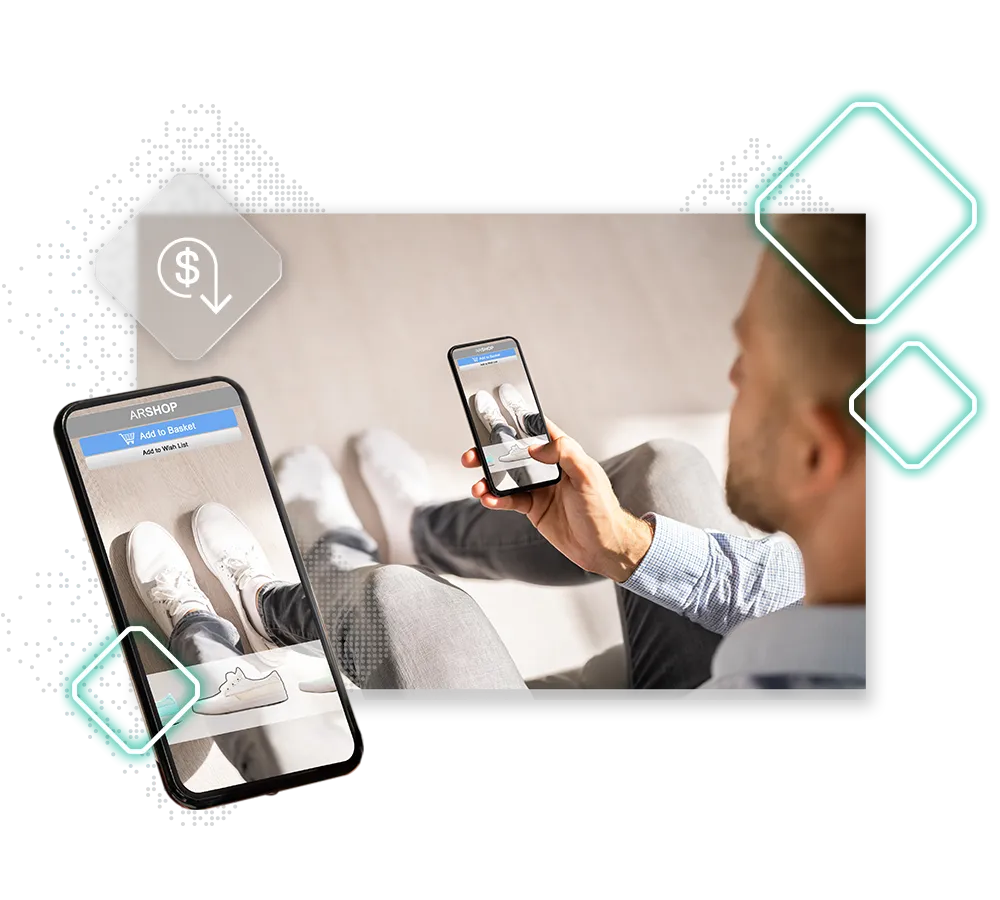Stay Competitive With Visual Commerce
Discover how assisted buying with visual commerce is no longer a futuristic solution, but one available for your business right now that will increase customer trust and differentiate your brand.Status Quo
There’s a reason why the term “window shopping” exists – customers like to see products before they buy them. But how does this work in an increasingly digital buying landscape? What about complex B2B products, such as heavy machinery, where there’s little possibility of a showroom?
This is where Visual Commerce comes into play. Broadly speaking, it means anything that helps a buyer to visualize the product they need, increasing the opportunity for sales. Most commonly, this is achieved via high-resolution imagery, videos, customer-generated content, augmented reality, and 3D technology.
While that might sound like something from a sci-fi movie, Visual Commerce technology has been used by all kinds of businesses for years – from car manufacturers who help buyers visualize how to swap in and out various parts, to office planners needing to forecast how many desks can fit in a specific space.
By assisting buyers with more tangible information, Visual Commerce increases trust with your customers, and differentiates your brand in a competitive market. Simply put: It makes highly complex or customizable products shoppable online.
Challenges for B2B Businesses Without Visual Commerce Capabilities
- Complex or made-to-order products are often unavailable to buy digitally with visual representation, slowing the sales process and decreasing convenience for the buyer.
- Inconvenience and difficulty in searching for and ordering spare parts for complex products.
- Lack of trust with buyers if they can’t fully visualize a product, especially at a higher price point.
- Without being able to visualize a customized product, expectations and results can be unclear for the buyer.
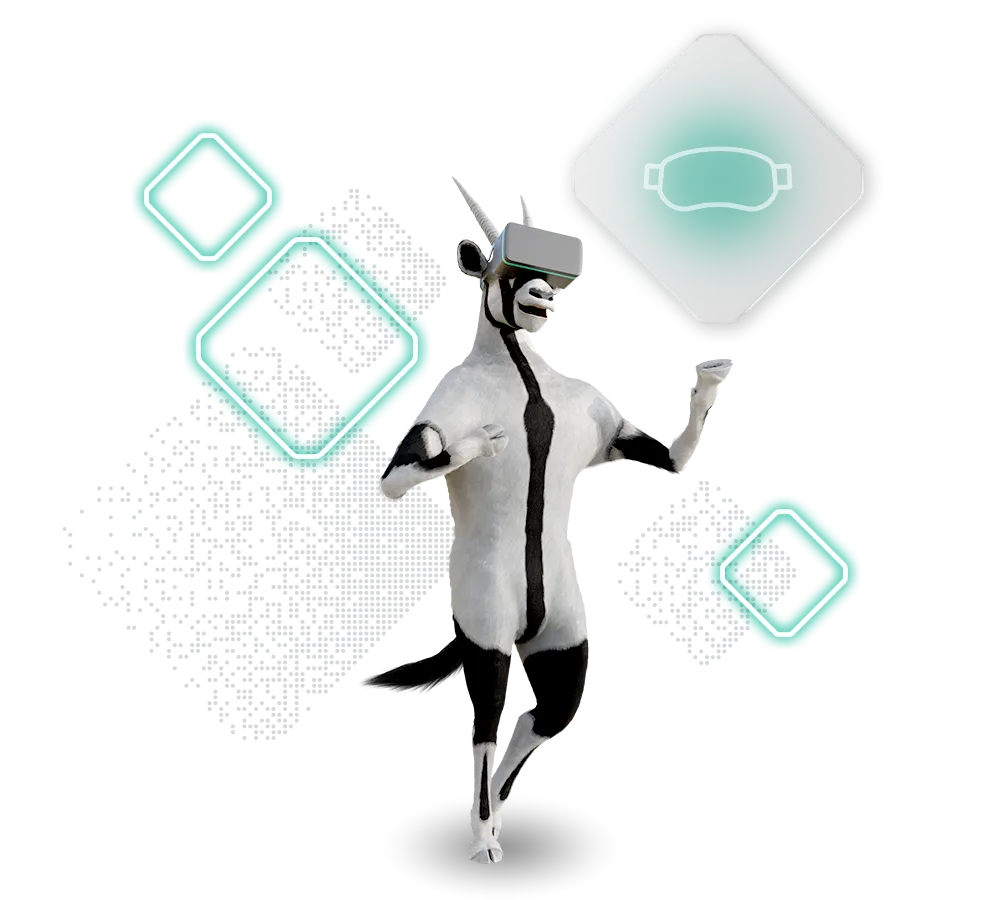
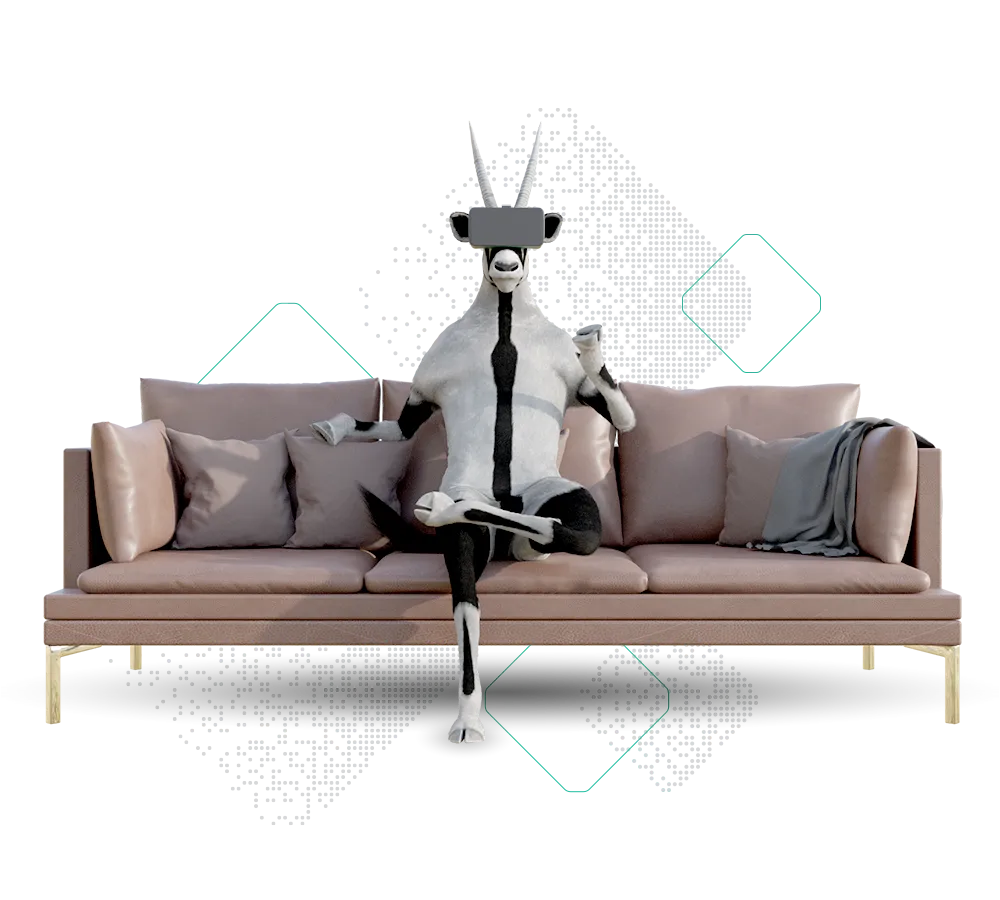
Higher Customer Convenience & Satisfaction
- Visual content leads to better customer engagement and aligned expectations.
- Videos, high-resolution images, and AR product information enhances the customer experience, improving brand perception.
- With AR, buyers can “try” products before they buy, which encourages purchase.
Increased Revenue
- Visual configurators allow customers to build bespoke products. Prices can then be raised due to reduced comparability with competitors.
- Visual content such as video improves product discoverability, positively impacting conversions and revenue.
- Average Order Value increases with the use of visual commerce.
- High-quality images make cross and up-selling easy.
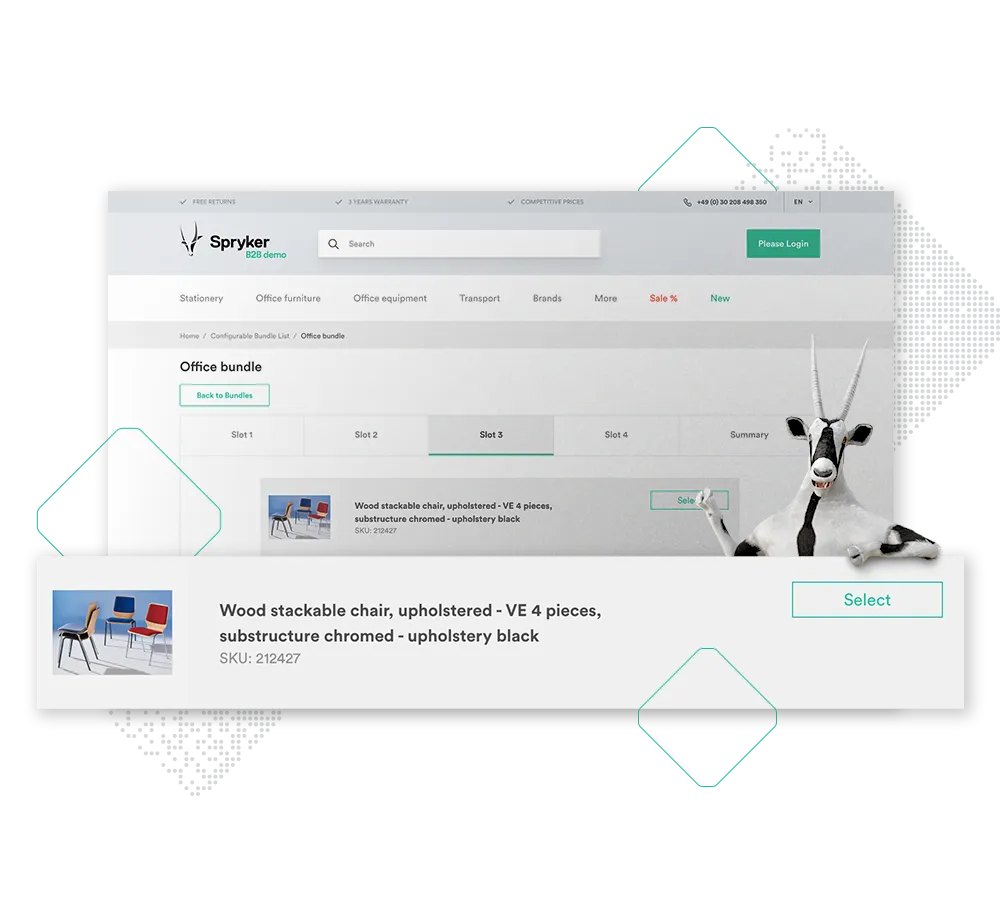
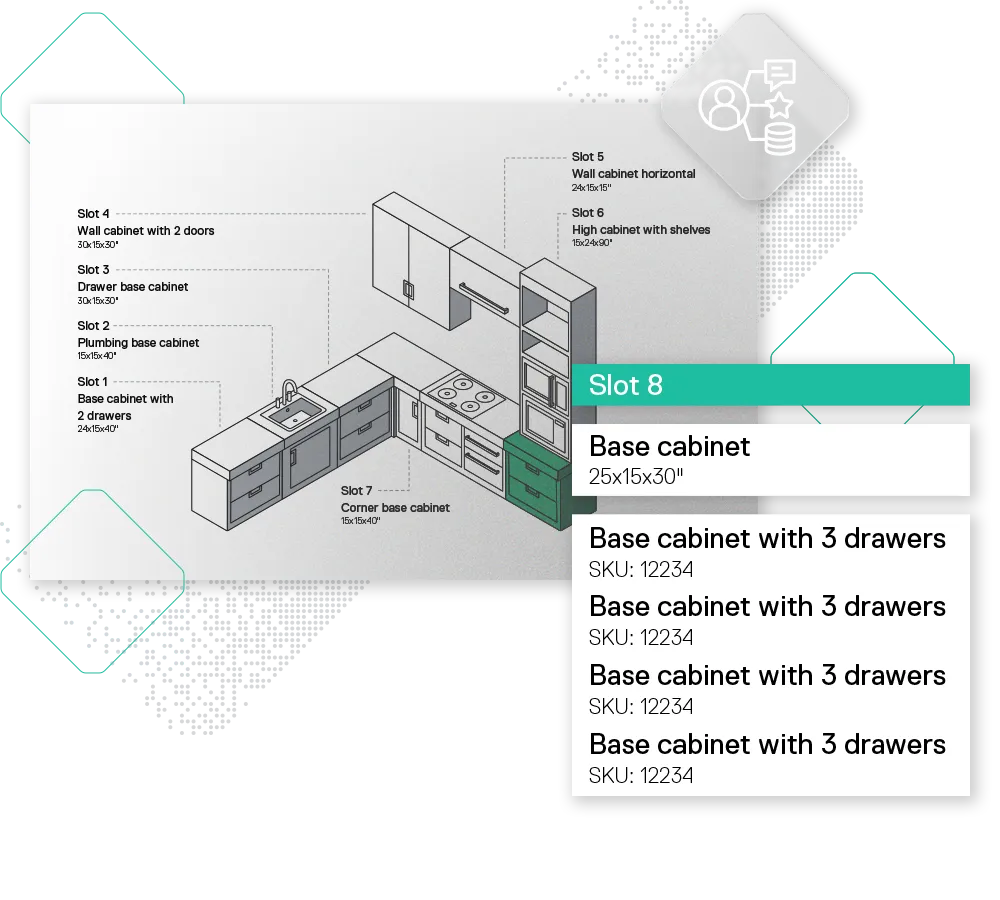
Increased Conversions Through Building Trust & Educating Customers
- Visual content builds trust by providing more tangible information about your product, such as how it would fit with existing products.
- Educational content such as video tutorials helps buyers with their purchase decisions and increases trust.
- For the industries where user-generated content is relevant, it results in organic social proof and builds trust.
- User-generated content illustrates how a product looks or fits, and helps to reduce doubt in other buyers' purchase journeys.
Examples of Visual Commerce in B2B
Visual Commerce is a broad term to describe anything that incorporates imagery or video to enhance the buyer experience, and attract, engage, and influence potential customers.- Visual Configurators: Typically utilizing 2D, 3D images, or augmented reality, this tool allows buyers to customize and visualize products to their exact specifications.
Example: A chocolate manufacturer could use a visual configurator to customize the packaging line for their chocolate bars. - Visual Search: AI technology uses image recognition to allow users to search with images instead of text.Example: A carpenter visits a trade fair and sees a particular type of wood in an installation they're interested in. They take a photo and input it into a visual search. It returns similar images of the desired material, and options to buy it.
- Digital Catalogs: Exhibits visual examples of the product in different environments or configurations to inspire the buyer:
Example: A furniture business illustrates all the different shapes and colors their chairs come in, shown in various room styles to show the buyer all the possibilities available. - Visual Product Finder: Commonly used for spare part identification. Instead of needing the name or SKU, the buyer can zoom in on a visual representation of the product to identify the spare part they need.
Example: A plumber comes across a part without any identification markings such as a serial number. They take a photo and input it into the visual search. It offers options for the required part. - Augmented Reality: AR technology allows buyers to see how a product would fit into an existing space.
Example: A gym-owner buying new machines could use AR to plan the layout of their space, and make sure the new machines will fit.
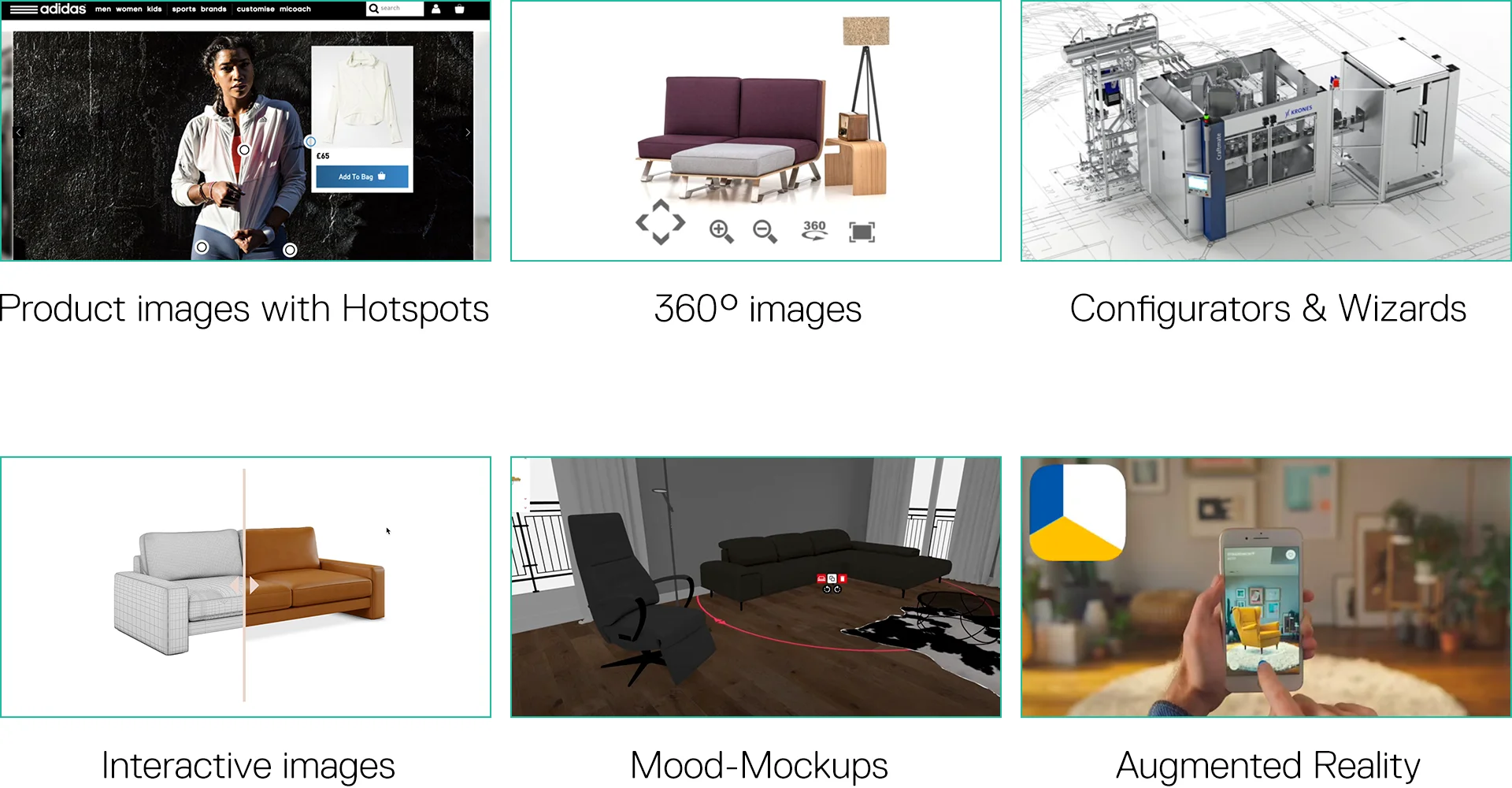
How Spryker Can Help Your Business
Our B2B Solution with Spryker Cloud Commerce OS includes a Configurable Bundles feature, a self-service tool that guides customers through the process of ordering complex products using Visual Commerce concepts. Alongside this core capability, we work with an extensive network of partners who can further extend your Visual Commerce capabilities with features such as 3D visualization and augmented reality.Supporting you every step of the journey, our in-house business consultants offer tailored enabling services, such as a customer journey analysis, to ensure your adoption of Visual Commerce is successful.
Spryker Capabilities
- Configurable Bundles
Enabling Services
- Calibration session
- Customer Journey Analysis
- Operating Model Coaching
Technology Partner
- Expivi
- Augmenteers
- CDS Visual
Sonepar
Combination tool:
Customers can configure individual electric switches and sockets as they wish. They simply select their preferred manufacturer and then use drag & drop to put together the desired combination themselves.
Lamp Finder:
Guides customers quickly to the right lamp. Filters such as bases and shapes are displayed as images in an easily understandable way, and with each selection made, the remaining possible combinations are automatically calculated and displayed.
About Spryker
Spryker is the leading global composable commerce platform for enterprises with sophisticated business models to enable growth, innovation, and differentiation. Designed specifically for sophisticated transactional businesses, Spryker’s easy-to-use, headless, API-first model offers a best-of-breed approach that provides businesses the flexibility to adapt, scale, and quickly go to market while facilitating faster time-to-value throughout their digital transformation journey. As a global platform leader for B2B and B2C Enterprise Marketplaces, IoT Commerce, and Unified Commerce, Spryker has empowered 150+ global enterprise customers worldwide and is trusted by brands such as ALDI, Siemens, ZF Friedrichshafen, and Ricoh. Spryker is a privately held technology company headquartered in Berlin and New York backed by world class investors such as TCV, One Peak, Project A, Cherry Ventures, and Maverick Capital. Learn more at spryker.com.
